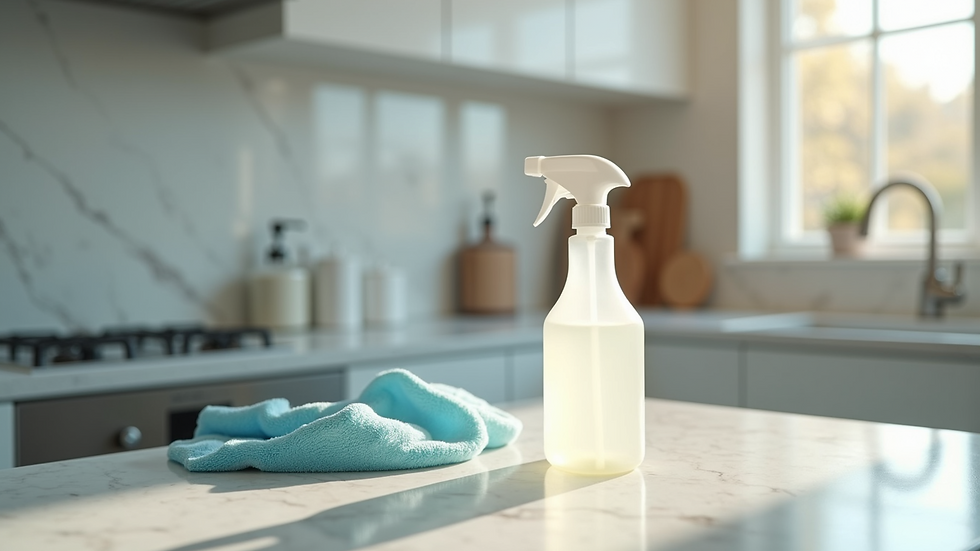Effective Disinfection Techniques for a Healthy Home
- geraldsmith157
- Nov 8
- 3 min read
Keeping our living spaces clean and germ-free is more important than ever. I’ve learned that disinfection isn’t just about wiping surfaces; it’s about creating a safe, healthy environment where everyone can thrive. Whether you’re caring for a busy household, managing a school, or supporting a community space, knowing the right disinfection techniques can make a huge difference.
Let’s dive into some practical, safe disinfection methods that you can easily apply. I’ll share tips, explain why certain approaches work best, and help you feel confident in your cleaning routine.
Why Safe Disinfection Methods Matter
Disinfection is more than just killing germs. It’s about doing it safely. Harsh chemicals can sometimes cause more harm than good, especially around kids, pets, or people with sensitivities. That’s why I always recommend choosing products and methods that are both effective and gentle.
Safe disinfection methods help:
Protect your family’s health without exposing them to toxic substances
Maintain indoor air quality by avoiding harsh fumes
Preserve surfaces and materials in your home or facility
Support long-term wellness by reducing chemical overuse
For example, using disinfecting wipes that are free from bleach and harsh solvents can keep your kitchen counters clean without irritating your skin or respiratory system. This balance is key to a healthy home.

Top Safe Disinfection Methods You Can Trust
Here are some of the best safe disinfection methods I’ve found effective and easy to use:
1. Use EPA-Approved Disinfectants with Gentle Formulas
Look for disinfectants that are EPA-approved for killing viruses and bacteria but are formulated to be gentle. Many brands now offer wipes and sprays that avoid harsh chemicals like ammonia or bleach. These products often use ingredients like hydrogen peroxide or ethanol in safe concentrations.
Tip: Always read the label to check for safety information and recommended contact time (how long the surface should stay wet for effective disinfection).
2. Regular Cleaning Before Disinfection
Disinfection works best on clean surfaces. Dirt and grime can shield germs from disinfectants. So, start by wiping down surfaces with soap and water or a mild cleaner. Then apply your disinfectant.
3. Focus on High-Touch Areas
Some spots collect more germs than others. Make sure to disinfect:
Door handles and knobs
Light switches
Remote controls
Countertops and tables
Bathroom fixtures
4. Use Microfiber Cloths
Microfiber cloths trap dirt and microbes better than regular cloths. They also require less chemical use because they clean effectively with just water or mild cleaners.
5. Ventilate While Cleaning
Open windows or use fans to keep air moving. This helps reduce any lingering fumes and keeps your space fresh.
How to Disinfect Different Surfaces Safely
Different materials need different care. Here’s how I handle common surfaces:
Hard Surfaces (Countertops, Tables, Doorknobs)
Clean with soap and water first.
Use a disinfecting wipe or spray with a gentle formula.
Let the surface air dry or stay wet for the recommended time.
Electronics (Phones, Tablets, Keyboards)
Use alcohol-based wipes with at least 70% alcohol.
Avoid spraying liquids directly on devices.
Wipe gently to avoid damage.
Fabrics and Soft Surfaces (Couches, Curtains)
Vacuum regularly.
Use fabric-safe disinfectant sprays if needed.
Wash removable covers in hot water.
Floors
Sweep or vacuum first.
Mop with a disinfectant solution safe for your floor type.
Avoid over-wetting wood floors to prevent damage.

Smart Tools and Products That Make Disinfection Easier
Technology and smart products can simplify your cleaning routine. For example, I’ve found that using disinfecting wipes from trusted brands can save time and reduce waste. One brand I trust is smartneat.com gtra l, which offers gentle yet effective wipes designed for households and community spaces.
Other helpful tools include:
UV-C light sanitizers for phones and small items
Touchless soap dispensers to reduce cross-contamination
Color-coded cleaning cloths to avoid spreading germs between areas
Using these tools smartly can boost your disinfection efforts without extra hassle.
Tips for Maintaining a Healthy Environment Beyond Disinfection
Disinfection is just one part of a healthy home or community space. Here are some additional habits I recommend:
Wash hands frequently with soap and water
Encourage everyone to cover coughs and sneezes
Keep shared items like toys and books clean
Maintain good ventilation and air quality
Dispose of trash regularly and properly
By combining these habits with safe disinfection methods, you create a strong defense against germs and illness.
Creating a Routine That Works for You
Consistency is key. I suggest setting a cleaning and disinfection schedule that fits your lifestyle. For example:
Daily: Wipe down high-touch surfaces and clean hands
Weekly: Deep clean floors, electronics, and fabric items
Monthly: Check and restock cleaning supplies, inspect ventilation
Adjust the frequency based on your household size, activity level, and any health concerns.
Disinfection doesn’t have to be complicated or scary. With the right knowledge and tools, you can keep your space safe and welcoming. Remember, choosing safe disinfection methods protects not just your home but also the health of your loved ones and community.
Stay healthy and happy cleaning!




Comments